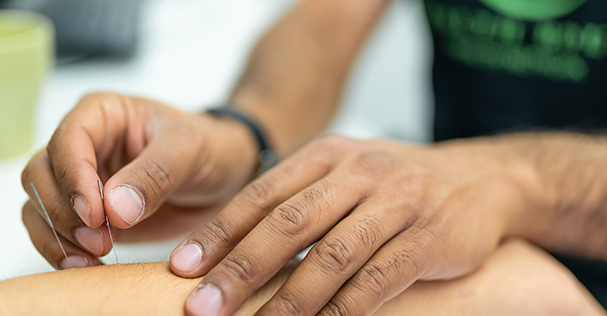Acupuncture is an alternative medicine technique that involves the insertion of tiny needles at particular points into one’s body to promote local tissue effects (analgesia, reducing swelling), relieve pain, reduce trigger points, and decrease sympathetic system activity. In addition, acupuncture has a calming effect and helps one’s overall well-being. With acupuncture, at specific points of the body, the nervous system is stimulated to release chemicals in the brain, spinal cord, and muscles. These chemicals change the experience of pain or trigger the release of other chemicals and hormones to regulate the body’s system.

ACUPUNCTURE
HOW IS ACUPUNCTURE ADMINISTERED
When performing this procedure, the acupuncturist inserts very fine needles under the skin at locations corresponding to a pressure point. Because the needles themselves are very thin, the patient experiences minimal discomfort. Before the insertion, the acupuncturist ensures that the needles are sterilized correctly to avoid infection. After the insertion, the needles may be gently moved or twirled to relieve any pressure or swelling that might be present in a particular area. In addition, the practitioner may also apply heat or a mild electric pulse to the needles inserted into the skin. Typically, they will remain in place for fifteen to thirty minutes while the patient lies still and relaxes. When removed, no sensation of discomfort is usually experienced.
CONDITIONS TREATED
One may try acupuncture for symptomatic relief of a variety of diseases and conditions that include the following:
- Fibromyalgia
- Headaches
- Labour pain
- Low back pain
- Menstrual cramps
- Migraines
- Osteoarthritis
- Postoperative dental pain
- Tennis elbow
- Chemotherapy-induced nausea and vomiting

RELEVANT LINKS
- Acupuncture Council Ontario http://www.aco-web.com/home.html
- Canadian Contemporary Acupuncture Association https://www.contemporaryacupuncture.ca/

